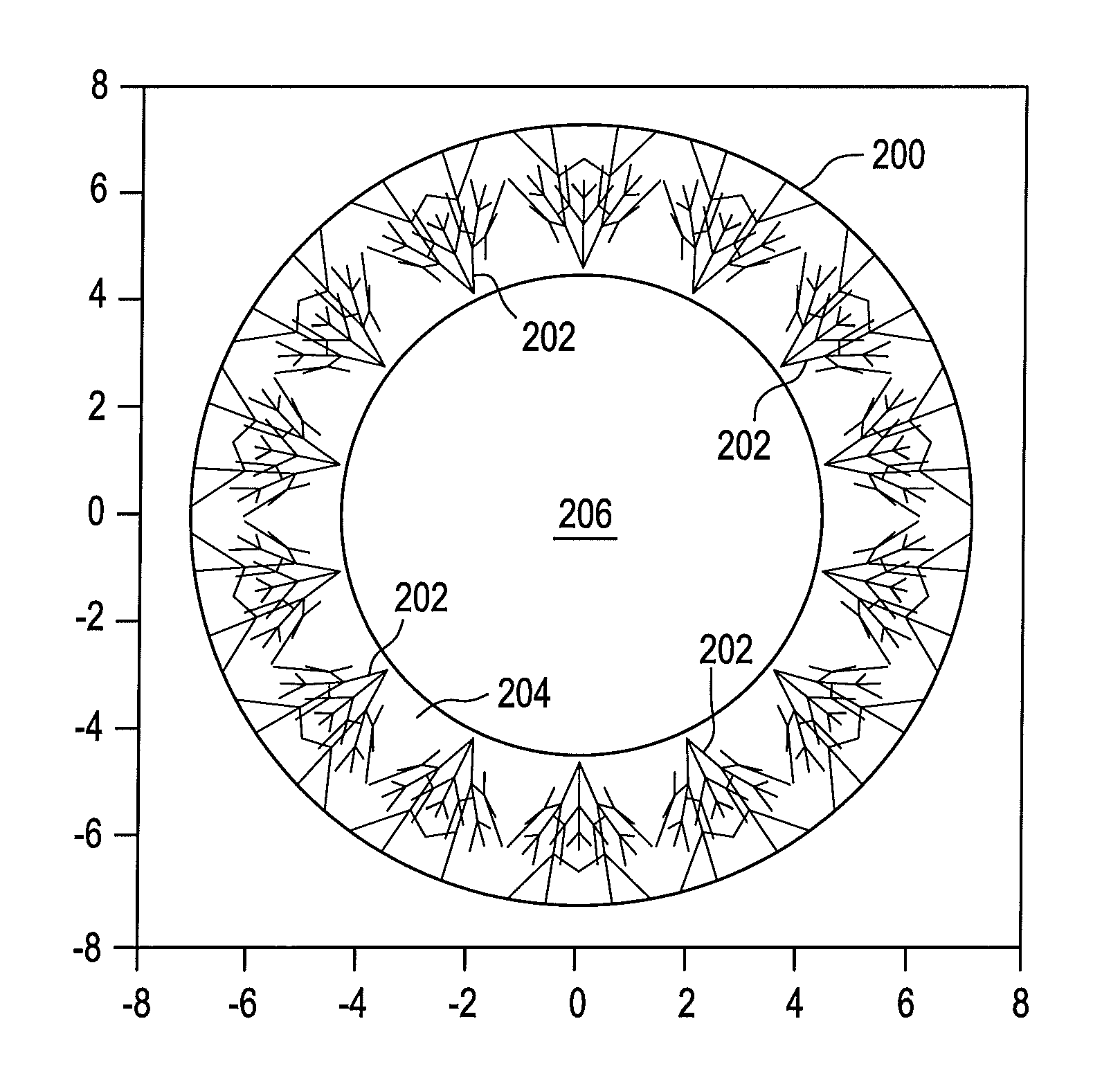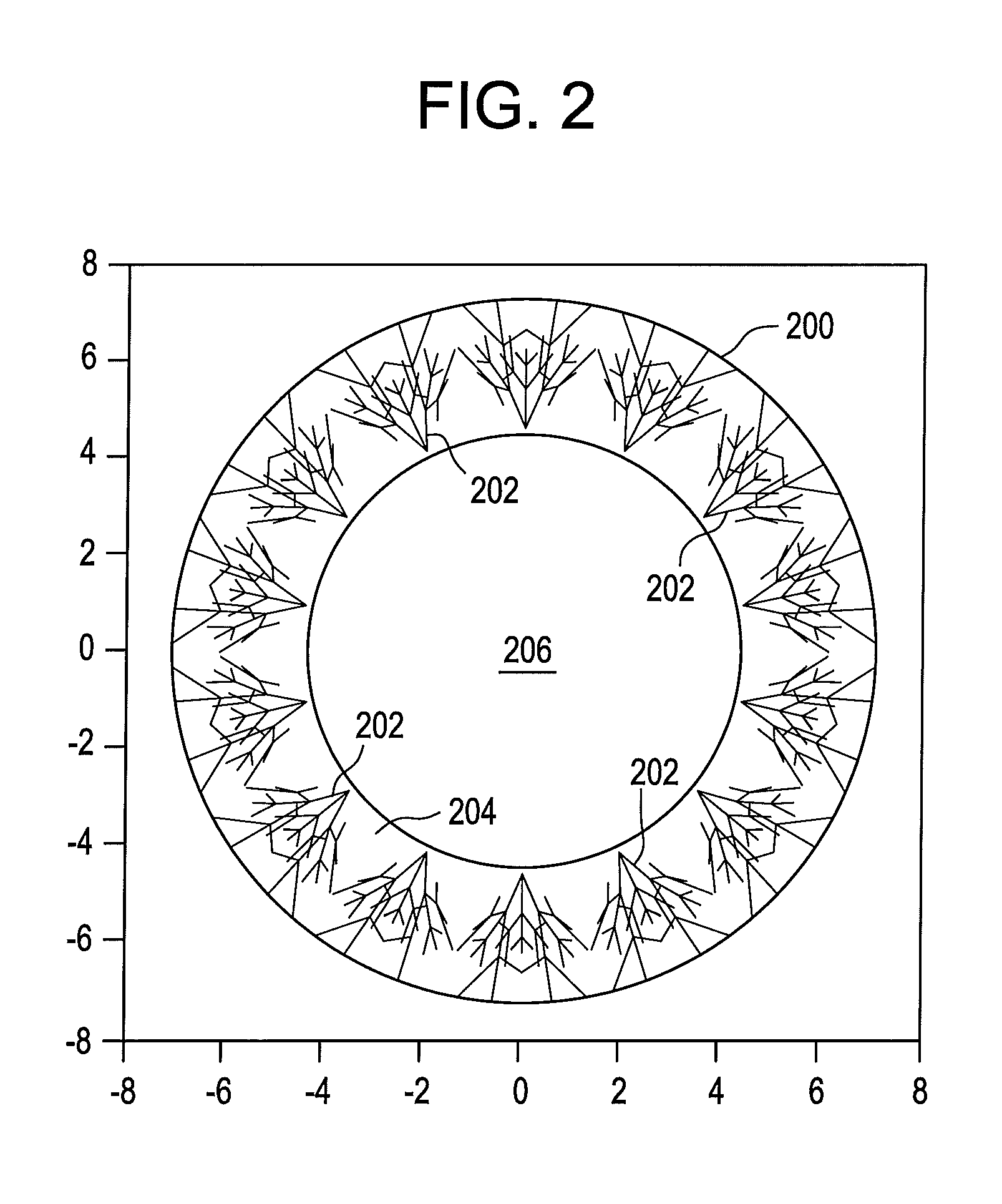Fractal features for enhanced tear exchange
a technology of enhanced tear exchange and fractal features, which is applied in the field of contact lenses having improved tear exchange, can solve the problems of not being suitable for all patients, affecting the patient's vision, and being relatively expensive and fragile, so as to improve the tear exchange, improve the comfort of the lens, and improve the effect of vision
- Summary
- Abstract
- Description
- Claims
- Application Information
AI Technical Summary
Benefits of technology
Problems solved by technology
Method used
Image
Examples
Embodiment Construction
[0019]FIG. 1 illustrates the anatomy of the drainage system of a human eye 100. Tears are produced by the lacrimal gland, not illustrated, superior to the outer portion of each eye 100. Tears flow across the surface of the eye 100 to a shallow pool, termed the lacrimal lake 102, located where the upper and lower eyelids come together at their inner ends or nasal ends. From there, the tears drain through small openings in each of the eyelids, namely, the upper lacrimal punctum 104 and the lower lacrimal punctum 106. From the upper lacrimal punctum 104 and the lower lacrimal punctum 106, the tears pass into the upper lacrimal canaliculus 108 and lower lacrimal canaliculus 110, respectively, which are duct-like pathways leading to the lacrimal sac 112. The lacrimal sac 112 is the superior, expanded portion of the nasolacrimal duct, not illustrated, which drains tears into the nasal system. The upper lacrimal punctum 104 and associated canaliculus 108 typically only drain about ten perc...
PUM
 Login to View More
Login to View More Abstract
Description
Claims
Application Information
 Login to View More
Login to View More - R&D
- Intellectual Property
- Life Sciences
- Materials
- Tech Scout
- Unparalleled Data Quality
- Higher Quality Content
- 60% Fewer Hallucinations
Browse by: Latest US Patents, China's latest patents, Technical Efficacy Thesaurus, Application Domain, Technology Topic, Popular Technical Reports.
© 2025 PatSnap. All rights reserved.Legal|Privacy policy|Modern Slavery Act Transparency Statement|Sitemap|About US| Contact US: help@patsnap.com



